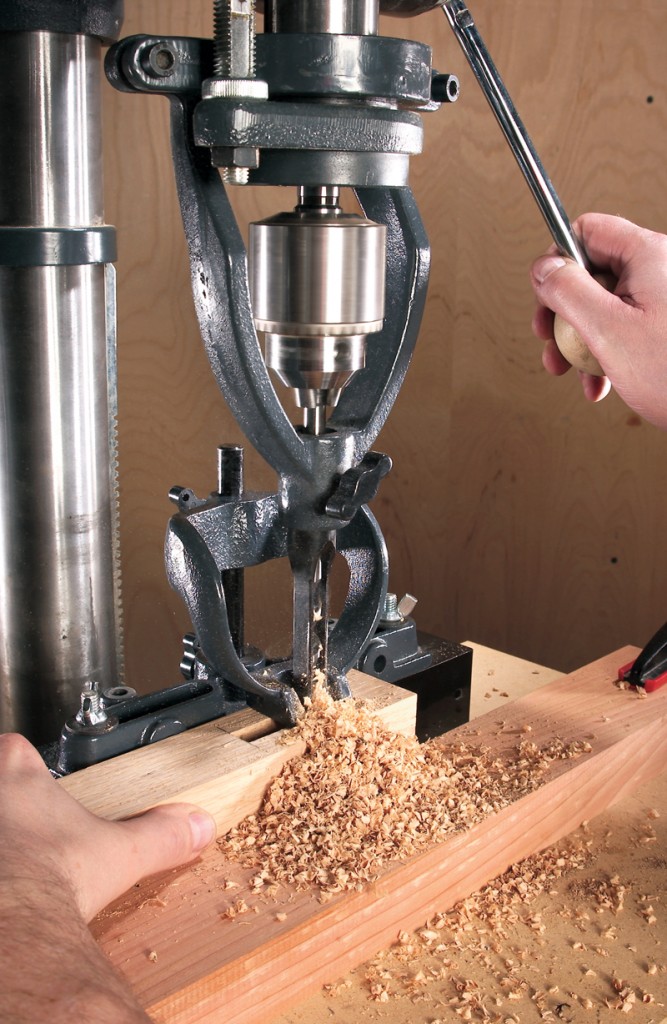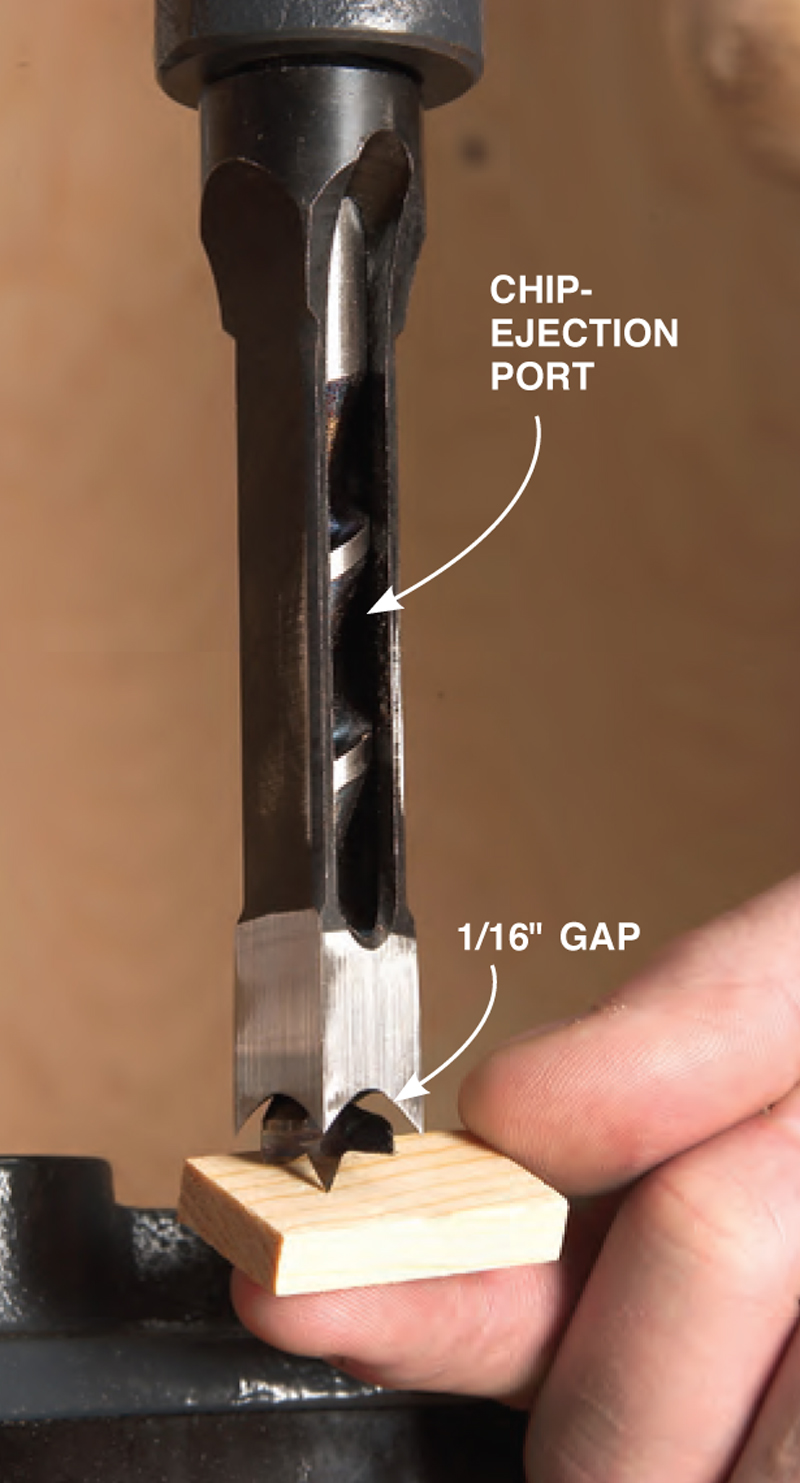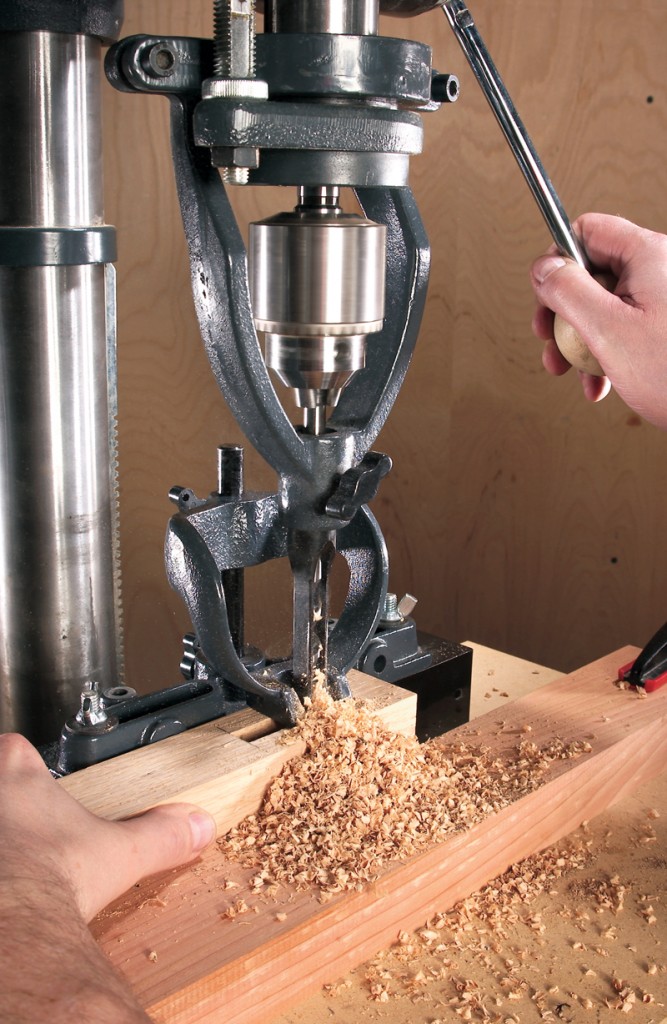Looking to expand your woodworking skills and wondering if mortising bits can be used in a drill press? Well, you’ve come to the right place! In this article, we’ll explore the fascinating world of mortising bits and whether they can be effectively utilized with a drill press. So, let’s dive in and find out more about this versatile woodworking tool combination.
If you’re a budding woodworker or a curious hobbyist, you might be wondering how to achieve cleaner and more precise mortise cuts. While mortising machines provide exceptional accuracy, not everyone may have access to one. That’s where the question arises: can mortising bits be used in a drill press? Stick around as we uncover the possibilities and limitations of this pairing. Whether you’re a seasoned woodworker or just starting out, this information will come in handy during your woodworking adventures.
Get ready to explore the depths of woodworking possibilities! In this article, we’ll delve into the topic of whether or not mortising bits can effectively be used with a drill press. From the basics to potential alternatives, we’ll cover it all. So, grab your safety goggles, secure your workpiece, and let’s find out if a drill press can handle the marvels of mortising bits.

Can Mortising Bits be Used in a Drill Press?
Drill presses are versatile tools commonly used for drilling holes in various materials. On the other hand, mortising bits are designed specifically for creating mortises, which are rectangular holes typically used in woodworking joinery. The question is: can you use mortising bits in a drill press? In this article, we will explore the compatibility of mortising bits with drill presses, the advantages and disadvantages of using them together, and some tips for achieving optimal results.
The Compatibility of Mortising Bits and Drill Presses
When it comes to using mortising bits in a drill press, the short answer is yes, you can. However, it is crucial to consider a few factors to ensure compatibility and optimal performance. Firstly, make sure that your drill press is equipped with a mortising attachment or accessory. This attachment usually consists of a special chuck or holder designed to accommodate the shank size of the mortising bit, as well as a mechanism to handle the vertical plunge of the bit during operation. Without the appropriate attachment, attempting to use a mortising bit in a regular drill press chuck can be dangerous and result in poor performance.
Once you have the proper attachment, you can use mortising bits in your drill press to create clean and accurate mortises. The vertical plunge feature of the mortising attachment allows you to control the depth and width of the mortise, providing precise results. However, keep in mind that drill presses are primarily designed for drilling, and using mortising bits for heavy-duty or prolonged mortising tasks may put strain on the motor and components of the drill press. Therefore, it is recommended to use a drill press with sufficient power and stability for mortising projects.
Advantages of Using Mortising Bits in a Drill Press
Using mortising bits in a drill press offers several advantages over alternative methods of creating mortises. Firstly, the vertical plunge mechanism of the drill press allows for consistent and precise depth control, resulting in uniform and clean mortises. This is particularly beneficial for woodworking projects that require accurate joinery connections. Additionally, the stability of the drill press ensures that the mortising bit stays aligned throughout the operation, minimizing the risk of errors or uneven mortises.
Another advantage is the versatility that a drill press provides. While mortising machines are dedicated tools solely for creating mortises, a drill press equipped with a mortising attachment allows you to switch between drilling and mortising functions, maximizing the use of your workshop space. This is especially useful for hobbyists or DIY enthusiasts with limited resources or workspace.
Furthermore, using a drill press for mortising tasks can be a cost-effective solution. Mortising machines can be quite expensive, and for occasional or small-scale mortising projects, investing in a separate machine may not be justifiable. By utilizing a drill press with a mortising attachment, you can achieve professional-looking results without breaking the bank.
Tips for Using Mortising Bits in a Drill Press
To ensure the best possible results when using mortising bits in a drill press, consider the following tips:
1. Choose the right bit size: Select a mortising bit that matches the dimensions of the mortise you intend to create. This will ensure a snug fit for the joinery and prevent any gaps or loose connections.
2. Secure the workpiece: Use clamps or a vise to firmly hold the workpiece in place during the mortising operation. This will prevent the wood from moving or shifting, resulting in more accurate and precise mortises.
3. Take multiple passes: When creating deep mortises, it is advisable to make multiple passes with increasing depth. This reduces the strain on the drill press and allows for better control over the cutting process.
4. Practice proper safety measures: Always wear appropriate safety gear, such as goggles and ear protection, when operating a drill press. Follow the manufacturer’s instructions for the drill press and mortising attachment, and take necessary precautions to avoid accidents or injuries.
In conclusion, mortising bits can indeed be used in a drill press with the right attachment. The compatibility and advantages make it a viable option for creating clean and precise mortises, particularly for woodworking projects. By following the recommended tips and guidelines, you can achieve professional-quality results while utilizing the versatility and convenience of a drill press. So, go ahead and explore the possibilities of using mortising bits in your drill press for your next woodworking project.
Can mortising bits be used in a drill press?
Mortising bits can be used in a drill press, but it is not the ideal tool for the job.
Here are some key takeaways:
- 1. Drill presses are primarily designed for drilling straight holes, while mortising bits require a plunging motion.
- 2. Using a mortising bit in a drill press may put unnecessary strain on the drill and result in poor performance.
- 3. It is recommended to use a dedicated mortising machine or a router with a mortising attachment for better results.
- 4. If you do choose to use a drill press, make sure to secure the workpiece and take extra precautions for safety.
- 5. Always consult the manufacturer’s guidelines and instructions before attempting to use any tool in a way it was not intended for.
Frequently Asked Questions
Are you wondering if mortising bits can be used in a drill press? Below, we answer some common questions related to this topic.
Can a drill press be used for mortising?
Yes, a drill press can be used for mortising, but it requires the right equipment and setup. To use a drill press for mortising, you’ll need a mortising attachment or a mortising bit specifically designed for drill presses. These special bits have a square shape and are designed to create square or rectangular holes, which are ideal for mortises. With the proper setup, a drill press can be a suitable tool for mortising.
However, it’s important to note that using a drill press for mortising has its limitations. It may not be as efficient as a dedicated mortising machine, especially when it comes to larger, deeper, or more complex mortises. Additionally, a drill press may not have the same level of precision as a dedicated mortising machine, so if precision is crucial, you may want to consider using a dedicated mortising machine instead.
What is a mortising attachment for a drill press?
A mortising attachment is an accessory that can be added to a drill press to convert it into a mortising machine. It typically consists of a base, a hold-down, and a chisel and bit assembly. The base is attached to the drill press, providing stability and support for the workpiece. The hold-down keeps the workpiece securely in place, while the chisel and bit assembly, operated by the drill press, creates the mortise in the workpiece.
Using a mortising attachment can be a cost-effective way to transform your drill press into a mortising machine, allowing you to perform mortising tasks without the need for a separate mortising machine. However, it’s important to choose a high-quality attachment and ensure proper setup and alignment to achieve accurate and clean mortises.
Can any drill press handle mortising?
While many drill presses can be used for mortising with the right attachments, not all of them are suitable for this task. The suitability of a drill press for mortising depends on its power, speed, and compatibility with mortising attachments. You’ll need a drill press with enough power to handle the force required for mortising, as well as the ability to adjust the speed to match the type of wood and bit you’re using.
Furthermore, the drill press needs to be compatible with mortising attachments or have a quill stroke long enough to accommodate the depth of the mortise you wish to create. It’s important to consult the drill press manufacturer’s recommendations and specifications or seek guidance from a professional to ensure that your drill press can handle mortising tasks effectively and safely.
What are the advantages of using a drill press for mortising?
Using a drill press for mortising offers several advantages. First, it can be a more cost-effective option compared to purchasing a dedicated mortising machine, especially if you already own a drill press. Secondly, a drill press can provide a more stable and accurate drilling platform compared to handheld routers or chisels, resulting in cleaner and more precise mortises.
Additionally, using a drill press for mortising allows you to take advantage of the versatility of the tool. When you’re not using it for mortising, you can still utilize the drill press for other drilling tasks. This makes a drill press a versatile tool in a woodworking shop, providing functionality beyond just mortising.
Are there any limitations to using a drill press for mortising?
While a drill press can be used for mortising, it does have some limitations. One limitation is the size and complexity of the mortises that can be achieved. A dedicated mortising machine typically offers more versatility and can handle larger, deeper, or more intricate mortises. Additionally, a drill press may not have the same level of precision as a dedicated mortising machine, which can be critical when working with certain projects that require high accuracy.
Furthermore, using a drill press for mortising may not be as efficient as using a dedicated mortising machine. Mortising machines are purpose-built for this task and often have features like adjustable fences and clamps, making the process smoother and more efficient. If you frequently work on projects that involve extensive mortising, investing in a dedicated mortising machine may be a better choice for optimal efficiency and precision.

Summary
Mortising bits are not recommended for use in a drill press because they can be dangerous. Drill presses spin too fast, which can cause the bit to get stuck and lead to injury. Mortising machines are specially designed for this task and are much safer to use. If you need to make mortise holes, it’s best to invest in a mortising machine or use other tools like a chisel or router.
Using the right tools for the job is crucial to work safely and efficiently. While drill presses are great for drilling holes, they are not meant for everything. It’s important to understand the limitations of your tools and choose the appropriate one for each task to ensure the best results and protect yourself from potential accidents.
